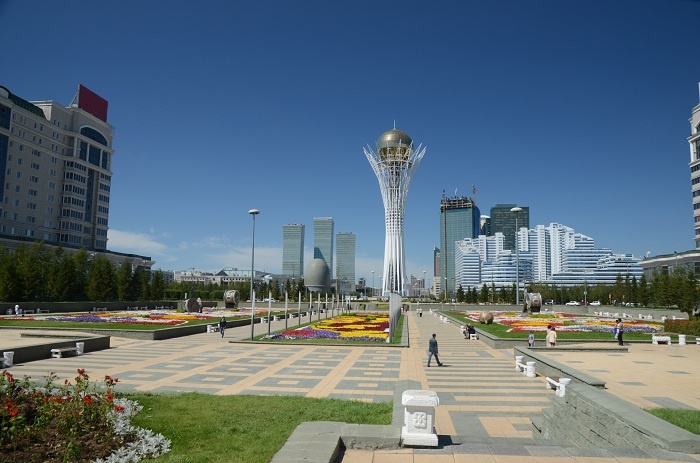
Breaking Travel News investigates: Astana welcomes Expo 2017
Something of a coming out party for the city, Astana is currently hosting Expo 2017.
The event seeks to welcome two to three million visitors to Kazakhstan as the country builds its international reputation.
Here Maria Korelina visits for Breaking Travel News.
Driving through the empty morning streets of Astana on the way to Expo 2017 the first thing you notice is the brazen architecture, with futuristic buildings popping out from the otherwise empty space.
The pyramid structure of the Palace of Peace & Reconciliation sits on the horizon, while the emblematic Bayterek Tower, rising nearly 100 metres above ground level, overlooks the city.
Atop it all sits a golden egg, held by the branches of a metallic poplar tree, symbolising the sun that grants life and hope.
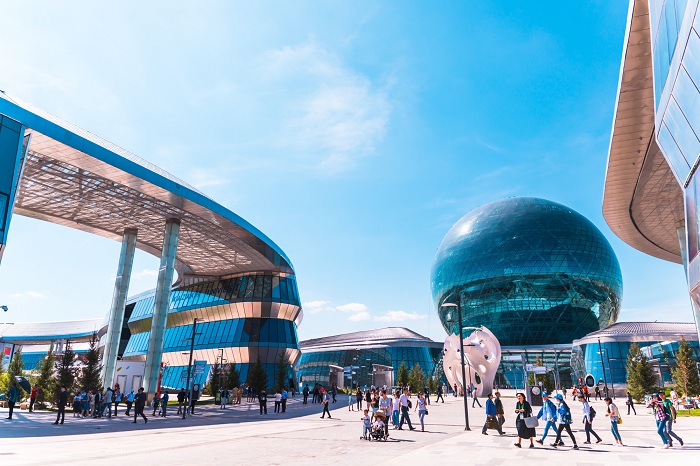
Just like Milton Keynes in the UK, Astana is a planned city.
Founded 20 years ago, it is a monument to the ambitions of Kazakhstan’s president, Nursultan Nazabrayev, who has been in power since the Soviet era.
The city took over as the capital, from Almaty in the south, in 1997.
It has been given a major facelift in time for the start Astana Expo 2017; there are no homeless people, nor any trash, on the streets.
Everything looks eye-wateringly shiny, up to and including the new police uniforms.
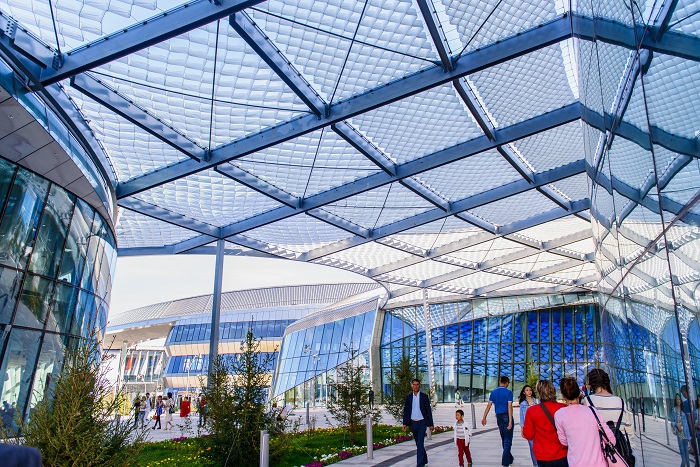
This year is the first time Expo has been hosted by a central Asian country.
For more than a century the jamborees have been used as an opportunity for host countries to grab a share of the spotlight on the international stage.
From Crystal Palace in London in 1851, right through the Cold War, they were employed to geopolitical ends, with each country trying to one up the last.
This sometimes had ruinous effects; Vancouver spectacularly overpaid for the 1986 Expo, with debts only being paid off over the long-haul.
In recent decades the Bureau International des Expositions-sanctioned events have somewhat lost their lustre.
With the easyJet-set able to fly around the world for a fraction of the cost of their parents’ generation, why make do with a second class imitation in a conference centre?
To its credit, Kazakhstan is seeking to reverse the trend, hoping Expo will prove to be a catalyst to put it on the map for international tourism.
To date the sector has not been a major strength for a landlocked country, wedged as it is in between China and Russia – many people can barely point to it on the map.
Indeed, the government hopes the Expo will also serve as a starting point for the future development of the whole of Kazakhstan.
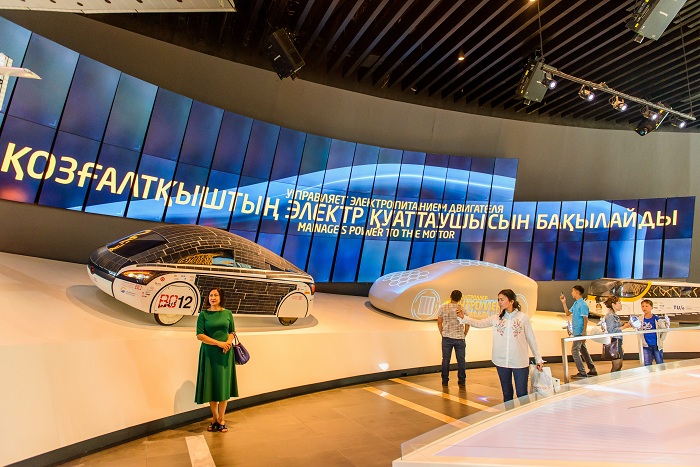
In an attempt to welcome international guests to the event, the city is working with 13 official tour operators.
These provide as many as 73 different package tours, stretching out to all corners of the country.
Starting in Astana, visitors can pick their own route, whether it is a weekend break in Almaty, a more historic trek through Turkestan to the Khoja Ahmed Yasawi Mausoleum and ancient settlements, or a scenic trip to the Sharyn Canyon and Baikonur Cosmodrome.
Kazakhstan is the ninth biggest country in the world, so there is plenty to explore.
As part of the Expo, Kazakhstan has also sought to open its doors to the world.
Visa free travel is now on offer to approximately 45 countries, for the duration of the Expo at least, notably including a three day transit option for visiting Chinese citizens.
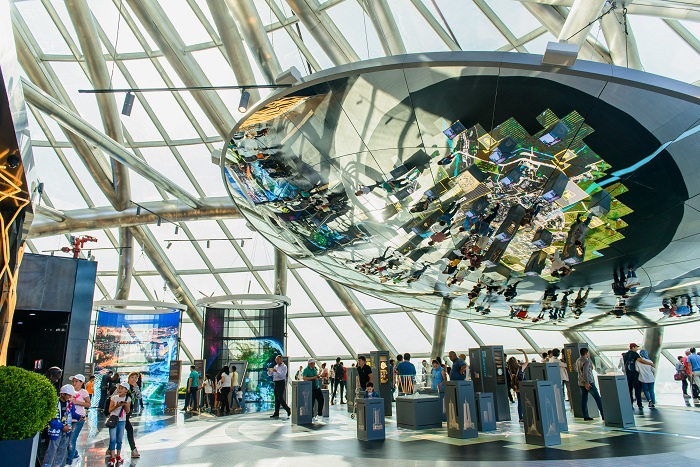
Expo 2017 itself operates under the headline ‘Future Energy’, examining the latest in sustainable technology.
Yet, in an oil rich country, hosting a green energy fair could be seen as somewhat cynical.
With Kazakhstan’s renewable energy output currently sitting at 300 megawatts a year, a fraction of the total, the country has a long road ahead of it.
But the foundations have been laid; with president Nazarbayev having set a goal of meeting half of the country’s domestic power needs form renewable energy sources by 2050.
An Expo 2017 spokesman explains to visiting journalists: “We are concerned and we need to think about the future.
“We are aware that natural resources, such as gas and oil, are finite and this is why we are here not only to show but also to share our advancements in green energy practices with each other.”

The Expo takes place in a purpose built 173 hectare complex on the edge of the city.
Some 115 countries and 22 international organisations are here, having joined forces as they seek to tackle the energy related issues of our time.
Somewhat grandly, organisers claim the event will seek a new model for global energy production.
While that might not be possible in the three months allotted, the Expo did apparently welcome its one millionth guests in early July.
Overall visitor number expectations have been gradually downgraded,
From highs of five million originally mooted, Expo organisers currently hope anywhere between two and three million people will pass through the turnstiles before the closing ceremony in September.
Around 15 per cent are expected to travel internationally to the show, largely from Russia, the CIS, and surrounding central Asian republics.
“Everything is going according to plan,” is the refrain repeated the by senior management, unconsciously echoing the 1988 words of Yegor Letov, though in a slightly different context.

While the numbers are up for debate, the pavilions of Germany, South Korea and China were certainly packed as I walked through the Expo site.
Their interactive exhibitions are the most popular, with guests queuing to get in.
Many others are, however, empty, with local Kazakh staff entertaining themselves any way they can.
Walking into the United Kingdom pavilion I am accosted by four local attendants, each of whom is keen to tell me about the technological prowess of the destination.
At the centre of it all is the Nur Alem pavilion – home to the Kazakhstan exhibit.
Some 100 metres in height and 80 metres in diameter, it is the symbol of new Astana.
Organisers claim it is the largest finished spherical structure attempted to date and hosts the Future Energy museum.
Spread across eight floors, each is dedicated to a separate energy source such as wind, solar and space.
On the ground floor visitors are also treated to a tour of Kazakh history, culture and traditions, while the recent achievements of the country are also showcased.
With views over the city, a comprehensive exhibition, and queues of guests, it is certainly the highlight of any visit.
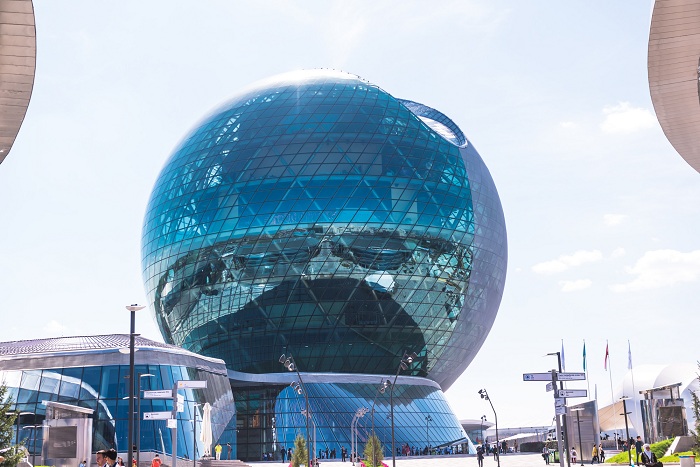
Looking ahead, Kazakhstan authorities hope the Expo complex will become a financial centre for the region, with claims of keen interest from China, the Middle East and Russia.
As Expo has fallen from grace in the developed world, it has become more attractive to emerging destination, as with Qatar hosting the FIFA World Cup 2022.
These mega events a shortcut to global status; a chance to showcase the best of the country and to build a legacy for the future.
The Kazakhstan government also demonstrated its ambition; narrowly missing out on hosting the Winter Olympics 2022, which eventually went to Beijing.
But the stakes, not to mention the costs, are high.
More Information
To find out more about visiting Kazakhstan head over to the official website.
Maria Korelina

